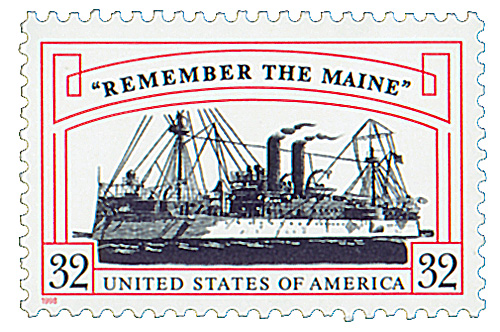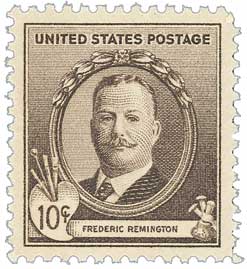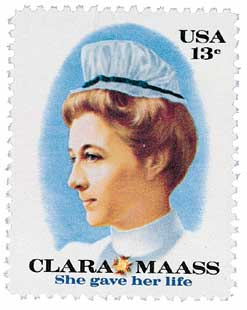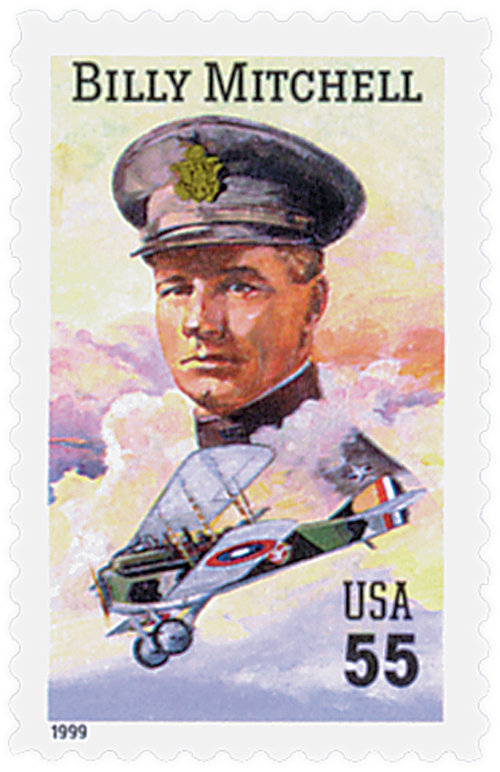
# RB20-31 - 1898 1/8c-5c Proprietary Stamps - "Remember the Maine!"
12 U.S. Proprietary Stamps Picturing the USS Maine
These stamps are over 125 years old and were issued the same year the battleship Maine sank. They helped pay for the Spanish-American War and will add interesting history to your stamp collection. Get them today.
Spanish-American War Begins

On April 21, 1898, Spain ended diplomatic relations with America and the US Navy established a blockade of Cuba, marking the official start of the Spanish-American War. The war would last less than four months, but saw the downfall of the Spanish Empire and the rise of America as a major world power with several new possessions.

One of the major issues that led to the war was Cuban independence from Spain. Cubans had revolted several times since 1868. Then in 1895, José Martí organized a three-pronged invasion of the island. It was initially successful, but Spanish Governor-General Valeriano Weyler responded by moving Cuban civilians away from the guerillas, so they couldn't help them. This essentially deprived them of weaponry, supplies, and other assistance. President William McKinley spoke out against the Spanish actions saying it "was not civilized warfare," but "extermination."

In America, newspapers publishers Joseph Pulitzer and William Randolph Hearst used yellow journalism to sensationalize the situation to sell papers, riling public support for the Cuban revolutionaries. American businesses also pressed the US government to help end the fighting because the ongoing conflict interrupted their trade.

President McKinley hoped to end the situation peacefully and entered negotiations with Spain. When a new Spanish government took over, they removed Weyler from Cuba. However, Cubans that were loyal to Spain planned demonstrations to oppose the move. The US consul in Cuba then requested a US warship be sent to Cuba to protect American citizens and interests there.

The USS Maine was sent to Cuba in January 1898. Then on February 15, it exploded and sank in Havana Harbor, killing most of its crew. US and Spanish investigators reached different conclusions on the cause of the explosion. Initially, most Americans opposed war, but after Senator Redfield Proctor delivered a speech concluding that war was the only option, many began to support it. President McKinley still hoped to avoid war, but under pressure, asked Congress to send US troops to Cuba on April 11.

Congress then passed a joint resolution demanding Spanish withdrawal and granting President McKinley to use as much military force as he deemed necessary to help Cuba gain independence. McKinley signed the resolution on April 20, forcing Spain's hand. The next day, Spain ceased diplomatic relations with the US, and the same day, the US Navy established a blockade of Cuba. Spain officially declared war on April 23, and the US Congress responded on April 25, that a state of war had existed since April 21. The Navy was well-prepared for the war, but the Army had to adapt quickly. Its force grew from just 24,000 to over 240,000 with volunteers and National Guard mobilization.

Though the situation in Cuba had sparked the war, other Spanish colonies were quick to join in the fighting. The Philippines had been opposing Spanish rule since 1896. In late April 1898, Assistant Secretary of the Navy Theodore Roosevelt ordered George Dewey to lead the Asiatic Squadron to protect the Philippines. The first battle of the war occurred there in Manila Bay on May 1. Dewey claimed victory in just a few hours, destroying the Spanish fleet and capturing the harbor. While the Filipinos initially welcomed the US troops, America's eventual annexation of the Philippines led to the Philippine-American War the following year.

The US also sent a single ship to Spanish-held Guam. It turned out that no Spanish warships had visited the island for over a year, and the people of Guam were unaware of the war. Captain Henry Glass captured the island without a fight and took over 50 Spanish prisoners.

American forces first landed in Cuba on June 10 at Guantanamo Bay. They skirmished near Siboney on June 23 and fought an indecisive battle at Las Guasimas on June 24. On July 1, two important battles occurred at El Cany and San Juan Hill. Spanish troops ran out of ammunition after a 12-hour fight at El Caney, which was then captured by the Americans. One of the most famous and significant battles of the war, San Juan Hill was captured by an American force outnumbering the Spanish 16 to one.

Despite these victories, the American advance was slowed with the Spanish victory at Fort Canosa. American and Cuban troops then began a bloody siege of Santiago. At the same time, American naval forces were stationed outside Santiago de Cuba, blocking a Spanish fleet taking refuge in the harbor. The Spanish attempted the leave the harbor on July 3, but American forces obliterated the fleet, destroying or grounding five of their six ships and capturing more than 1,600 Spanish sailors. It was the largest naval engagement of the war and essentially sealed American and Cuban victory in the war.

An armistice was signed in Santiago de Cuba, ending hostilities there. However, the war was still being fought in Puerto Rico. The American fighting began there on May 12 with Rear Admiral William T. Sampson's attack on San Juan. The US Navy established a blockade of the harbor. The ground offensive then began on July 25 and saw fighting at Yauco, Fajardo, Guayama, Asomante, and San German. Fighting in Puerto Rico ceased in August after President McKinley signed an armistice in which Spain gave up control of Puerto Rico.

Fighting officially ended on August 12, 1898, when the US and Spain signed the Protocol of Peace. The formal peace treaty, the Treaty of Paris, was signed on December 10 and ratified by the US Senate on February 6, 1899. As a result of the treaty, the US gained the Philippines, Guam, and Puerto Rico, and Cuba became a US protectorate until gaining its independence in 1902.

The war had several stamp connections. The Trans-Mississippi stamps were originally supposed to be printed in two colors, but to save money for the war effort they were printed in single colors. A century later, reproductions were printed in two colors.
The US also issued stamps for use in its new territories: click here for Puerto Rico stamps, here for Philippines stamps, here for Guam stamps, and here for Cuba stamps (the link also includes Cuba stamps issued after American occupation).
Several more people on US stamps participated in the war:
12 U.S. Proprietary Stamps Picturing the USS Maine
These stamps are over 125 years old and were issued the same year the battleship Maine sank. They helped pay for the Spanish-American War and will add interesting history to your stamp collection. Get them today.
Spanish-American War Begins

On April 21, 1898, Spain ended diplomatic relations with America and the US Navy established a blockade of Cuba, marking the official start of the Spanish-American War. The war would last less than four months, but saw the downfall of the Spanish Empire and the rise of America as a major world power with several new possessions.

One of the major issues that led to the war was Cuban independence from Spain. Cubans had revolted several times since 1868. Then in 1895, José Martí organized a three-pronged invasion of the island. It was initially successful, but Spanish Governor-General Valeriano Weyler responded by moving Cuban civilians away from the guerillas, so they couldn't help them. This essentially deprived them of weaponry, supplies, and other assistance. President William McKinley spoke out against the Spanish actions saying it "was not civilized warfare," but "extermination."

In America, newspapers publishers Joseph Pulitzer and William Randolph Hearst used yellow journalism to sensationalize the situation to sell papers, riling public support for the Cuban revolutionaries. American businesses also pressed the US government to help end the fighting because the ongoing conflict interrupted their trade.

President McKinley hoped to end the situation peacefully and entered negotiations with Spain. When a new Spanish government took over, they removed Weyler from Cuba. However, Cubans that were loyal to Spain planned demonstrations to oppose the move. The US consul in Cuba then requested a US warship be sent to Cuba to protect American citizens and interests there.

The USS Maine was sent to Cuba in January 1898. Then on February 15, it exploded and sank in Havana Harbor, killing most of its crew. US and Spanish investigators reached different conclusions on the cause of the explosion. Initially, most Americans opposed war, but after Senator Redfield Proctor delivered a speech concluding that war was the only option, many began to support it. President McKinley still hoped to avoid war, but under pressure, asked Congress to send US troops to Cuba on April 11.

Congress then passed a joint resolution demanding Spanish withdrawal and granting President McKinley to use as much military force as he deemed necessary to help Cuba gain independence. McKinley signed the resolution on April 20, forcing Spain's hand. The next day, Spain ceased diplomatic relations with the US, and the same day, the US Navy established a blockade of Cuba. Spain officially declared war on April 23, and the US Congress responded on April 25, that a state of war had existed since April 21. The Navy was well-prepared for the war, but the Army had to adapt quickly. Its force grew from just 24,000 to over 240,000 with volunteers and National Guard mobilization.

Though the situation in Cuba had sparked the war, other Spanish colonies were quick to join in the fighting. The Philippines had been opposing Spanish rule since 1896. In late April 1898, Assistant Secretary of the Navy Theodore Roosevelt ordered George Dewey to lead the Asiatic Squadron to protect the Philippines. The first battle of the war occurred there in Manila Bay on May 1. Dewey claimed victory in just a few hours, destroying the Spanish fleet and capturing the harbor. While the Filipinos initially welcomed the US troops, America's eventual annexation of the Philippines led to the Philippine-American War the following year.

The US also sent a single ship to Spanish-held Guam. It turned out that no Spanish warships had visited the island for over a year, and the people of Guam were unaware of the war. Captain Henry Glass captured the island without a fight and took over 50 Spanish prisoners.

American forces first landed in Cuba on June 10 at Guantanamo Bay. They skirmished near Siboney on June 23 and fought an indecisive battle at Las Guasimas on June 24. On July 1, two important battles occurred at El Cany and San Juan Hill. Spanish troops ran out of ammunition after a 12-hour fight at El Caney, which was then captured by the Americans. One of the most famous and significant battles of the war, San Juan Hill was captured by an American force outnumbering the Spanish 16 to one.

Despite these victories, the American advance was slowed with the Spanish victory at Fort Canosa. American and Cuban troops then began a bloody siege of Santiago. At the same time, American naval forces were stationed outside Santiago de Cuba, blocking a Spanish fleet taking refuge in the harbor. The Spanish attempted the leave the harbor on July 3, but American forces obliterated the fleet, destroying or grounding five of their six ships and capturing more than 1,600 Spanish sailors. It was the largest naval engagement of the war and essentially sealed American and Cuban victory in the war.

An armistice was signed in Santiago de Cuba, ending hostilities there. However, the war was still being fought in Puerto Rico. The American fighting began there on May 12 with Rear Admiral William T. Sampson's attack on San Juan. The US Navy established a blockade of the harbor. The ground offensive then began on July 25 and saw fighting at Yauco, Fajardo, Guayama, Asomante, and San German. Fighting in Puerto Rico ceased in August after President McKinley signed an armistice in which Spain gave up control of Puerto Rico.

Fighting officially ended on August 12, 1898, when the US and Spain signed the Protocol of Peace. The formal peace treaty, the Treaty of Paris, was signed on December 10 and ratified by the US Senate on February 6, 1899. As a result of the treaty, the US gained the Philippines, Guam, and Puerto Rico, and Cuba became a US protectorate until gaining its independence in 1902.

The war had several stamp connections. The Trans-Mississippi stamps were originally supposed to be printed in two colors, but to save money for the war effort they were printed in single colors. A century later, reproductions were printed in two colors.
The US also issued stamps for use in its new territories: click here for Puerto Rico stamps, here for Philippines stamps, here for Guam stamps, and here for Cuba stamps (the link also includes Cuba stamps issued after American occupation).
Several more people on US stamps participated in the war:





















